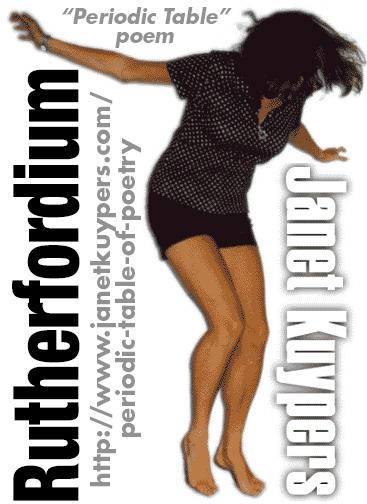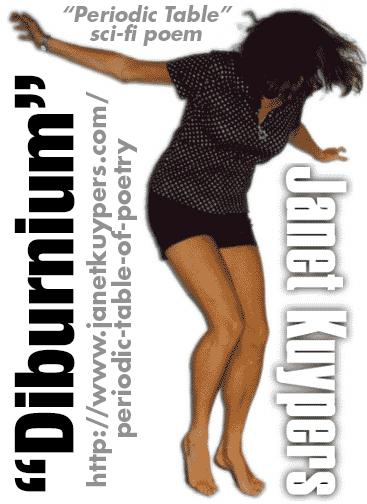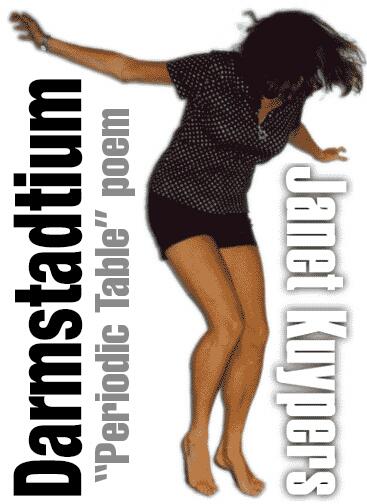Rutherfordium
Janet Kuypers

from the “Periodic Table of Poetry” series (#104, Rf)
7/3/14
And when I get that engagement ring…
I don’t want Zirconium, I want a diamond!
I want something stronger!
Even the band,
everyone wants Gold,
but Platinum is stronger,
even Tungsten
(which has a cool goth sound to it)…
What’s the strongest element out there – Iridium?
Hey, that’s the stuff that was in the asteroid
that killed all the dinosaurs!
‘Cuz that stuff’s so strong that it’s brittle
and can’t even be bent into a wedding band…
But I want the biggest, strongest ring on my finger
because I want EVERYONE to know
that I’m gonna be the bride!
Because I’ve really had my heart set
on this one amazing man, Ernest.
(Isn’t that the coolest name, Ernest?
I mean, I’m being earnest with you,
that’s his name, and it sounds so cool!)
You see, he’s from the Rutherford family
and I’m so taken with him.
Oh, and get this, he was born in New Zealand
and now lives in the U.K. — this man
must know the world,
and I think I’m gonna melt!
But the things is, whenever he’s around
he’s only around for fleeting moments,
he mixes with friends
and his isotopes are around for as long as an hour,
but sometimes only for ten minutes,
and sometimes just for a minute or two…
So I ever get the chance to be with him
long enough to tell him how I feel.
My friends tell me not to bother,
because his radioactive personality
(that I’m so drawn to)
means that if I get too close
he might be trouble for me.
Well, I may not be the smartest girl
if he is such a strong and intelligent man,
but I’ve been doing all the research I can
about him. When it comes to researh,
I want to work with him,
and I want to learn.
I only hope he’ll let me.



